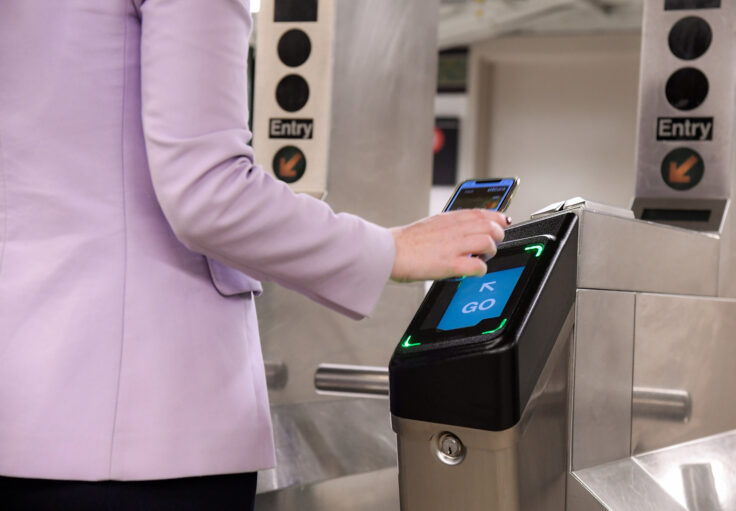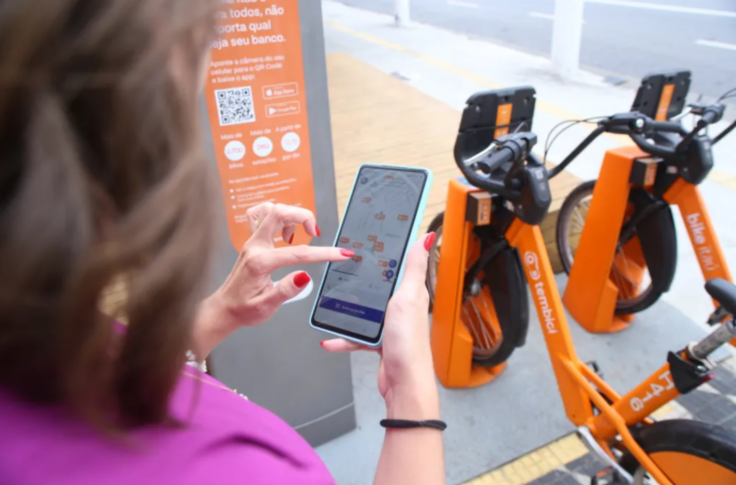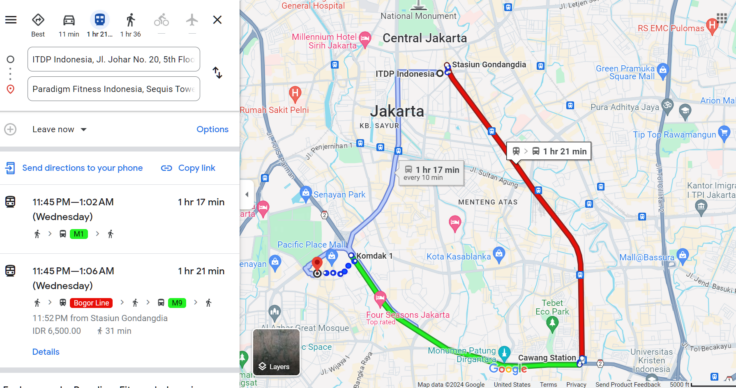March 01, 2024
What Digitalization Means for Transport
A version of this article was originally published in the No. 35 issue of the Sustainable Transport Magazine. Read it here.
By Taylor Reich, ITDP
“Elektronik vor Beton” is an idiom among Swiss transport planners, meaning “electronics before concrete.” In other words, before pouring money into bridges and tunnels, see how silicon can improve service. This phrase is not only valid in the Global North. It might even be more meaningful in the rest of the world, where digital technology can improve long-neglected modes of transport with great potential for reducing carbon emissions and connecting people to jobs.
Take the city of Jakarta. Just a year ago, if you wanted to get somewhere by bus in Indonesia’s capital, you often had to ask someone for directions and hope they knew. Today, thanks to the work of city agencies and partners convened by ITDP, Jakartans can get optimized bus directions instantly on their smartphones. Moreover, when they ride a bus—whether it is a cooperative-owned angkot microbus or a TransJakarta BRT—they can pay with a single smartcard with free transfers. Without needing to buy a single new bus, Jakarta has made it much easier to access public transport systems.
Digital technology is especially valuable for informal public transport, the unregulated or semi-regulated services that carry so much travel in many of the world’s regions. Digitalization will not solve problems by itself—it must be part of a coherent strategy supported by local expertise and political will. However, it is a catalyst for moving informal transport toward regulation, subsidy, safer operations, reliable service, and electrification. Digital transport is impactful at every level, from the local to the global, and the world’s journey toward digital transport is only just beginning.

A Shared Foundation: Open Standards
All approaches to digital transport must rest on a shared foundation of open data standards, enabling the combination of datasets from different sources. These include fundamentals like the General Transit Feed Specification (GTFS), the General Bikeshare Feed Specification (GBFS), and OpenStreetMap. For example, if five transit operators in the same city use different data specifications, a passenger will need five apps to get directions; if the transit operators all use GTFS, the passenger will need just one.
Local Digitalization: Mapping
A staggering 86% of cities worldwide do not have published public transport systems data. Digitalization begins with mapping and mapping is not just a step toward improvements; it is also an end in itself. In Cairo, for example, ITDP partner TransportForCairo has mapped the informal transport network of the Egyptian metropolis using GTFS. This map helps Cairenes find directions and it illustrates the significance of the informal network to decision-makers who have historically ignored it. The map demonstrates that at least one-third of residents of the Greater Cairo area live within a short walk of frequent transport services or systems.
Mapping is also essential for bicycle lanes. Bogotá, Colombia, has the fifth-most extensive bicycle lane system outside Europe. Bogotá is building new bicycle lanes so rapidly that it can be challenging to keep track. Technology can help—many cyclists like to use apps to find the safest, most direct route to their destination. Google Maps does not provide data for bicycle routes in Colombia. Fortunately, OpenStreetMap provides an international open standard for data about bicycle lanes, which anyone can use to get directions in Bogotá or worldwide.

Local Digitalization: Operations
After mapping, the next step is to use digital technology to regulate the operations of informal transport. In Merida, Mexico, ITDP provided technical assistance in using technology to improve bus fleet operations, digitally monitoring the concessioned bus operators to reduce maintenance issues and improve scheduling. With this new system, the buses now have a fixed schedule, with the government compensating operators per kilometer rather than per passenger. This increase in fleet efficiency led to a 9% reduction in CO2 emissions per passenger and an 11% increase in speed while increasing ridership and improving organizational efficiency-all without paying for any new buses.
Similarly, Rio de Janeiro rolled out a digital system to improve user experience on nearly 3,900 buses between 2021 and 2022. ITDP’s team in Brazil is mapping the usage of GPS data, e-ticketing, and GTFS in multiple municipalities to better understand the landscape of municipal public transport data. Digital operations enable city governments to better oversee and regulate public transport and provide targeted subsidies to transit-dependent and low-income groups. Meanwhile, in Jakarta, regulators are using digital monitoring to enforce a 200-kilometer daily cap on each transit driver, preventing excessive working hours and reducing the risk of operators falling asleep at the wheel.

Scaling Nationally
While individual cities can prove the benefits of transport digitalization, national governments can scale those benefits across the country. The Federal Transit Administration has begun requiring all public transport agencies to publish their data openly in GTFS in the United States. Governments in Latin America are considering similar policies. National-level policies to promote informal transport digitalization would rapidly expand the city-level benefits. Merida’s 9% reduction in emissions per passenger is significant; a similar reduction across all of Mexico would be groundbreaking.
In India, the country’s national Transport4All initiative, spearheaded by the government and supported by ITDP, has engaged over 100 cities in gathering better data on their public transport systems, with support from private technology companies. In 2022, the initiative selected ten startups to receive seed funding to help these cities implement digital operations, such as gathering online feedback from riders and streamlining staff schedules.
In Brazil, ITDP and partners have developed a comprehensive dashboard called Mobilidados to show meaningful indicators of urban transport across the country and help cities use data to better inform planning for public transport routes, stations, and cycle lanes. In Rio de Janeiro, Mobilidados is now helping identify bike lane locations for a citywide cycling plan based on route origin and destination data from the existing bikeshare system.
In Latin America, the Urban Accessibility Visualizer from ITDP combines data for various modes of travel in one interface, telling users where Mexico’s transport infrastructure is located and how people travel so that planners can focus on neighborhoods with the greatest need. ITDP’s forthcoming Atlas of Sustainable City Transport will analyze these same indicators on an international scale, helping make the case for increased transport funding from development banks and national governments. The Atlas is currently in development—contact [email protected] to learn more.

Potential for the Future
Cities like Jakarta and Merida have used digital technology to improve efficiency, ridership, and road safety by formalizing transport operations. These improvements have already delivered substantial reductions in emissions, which is only the beginning. Digitalization of existing transport is a significant step toward electrification. Without a map or a well-organized regulatory system, it would be impossible for a government to incentivize informal operators to electrify constructively. Jakarta, for example, with its current digital operations system, aims to fully electrify its fleet by 2030.
Even in Jakarta, there is still potential for growth—ridership data could be analyzed to optimize the network, for instance, or payments could be integrated with smartphones. Across the Global South, around a quarter of all travel is done by informal or semiformal public transport. The CO2 emissions from informal transport worldwide totals hundreds of millions of tons per year, as much as all sources of emissions in New York State combined. And that is only the start of the decarbonization potential: improving such services will support a widespread modal shift from private vehicles to public transport.
With the help of digital technology, cities can regulate and electrify their informal public transport, slashing emissions and bringing considerable benefits to road safety, accessibility, economic inclusion, and beyond.
